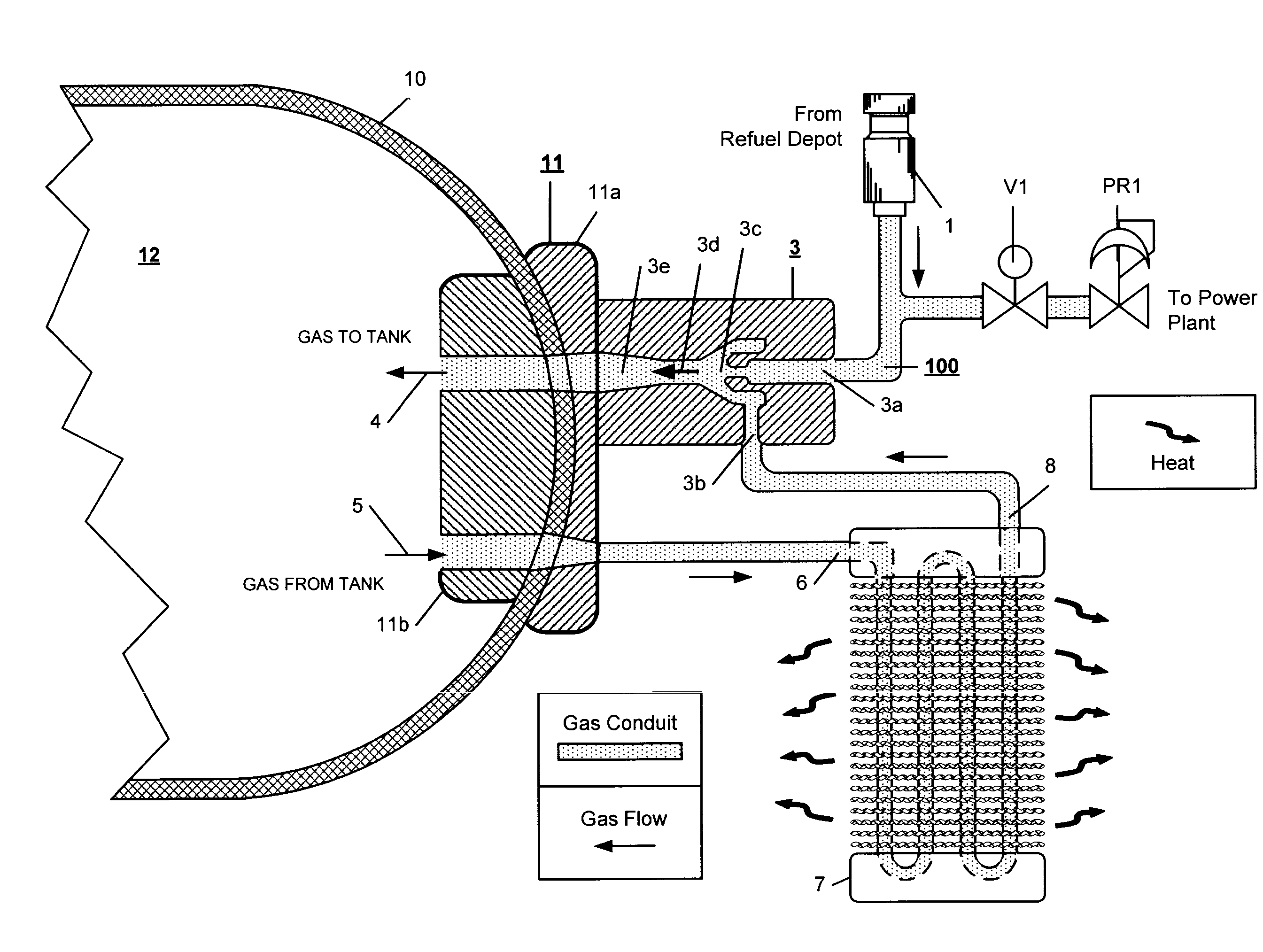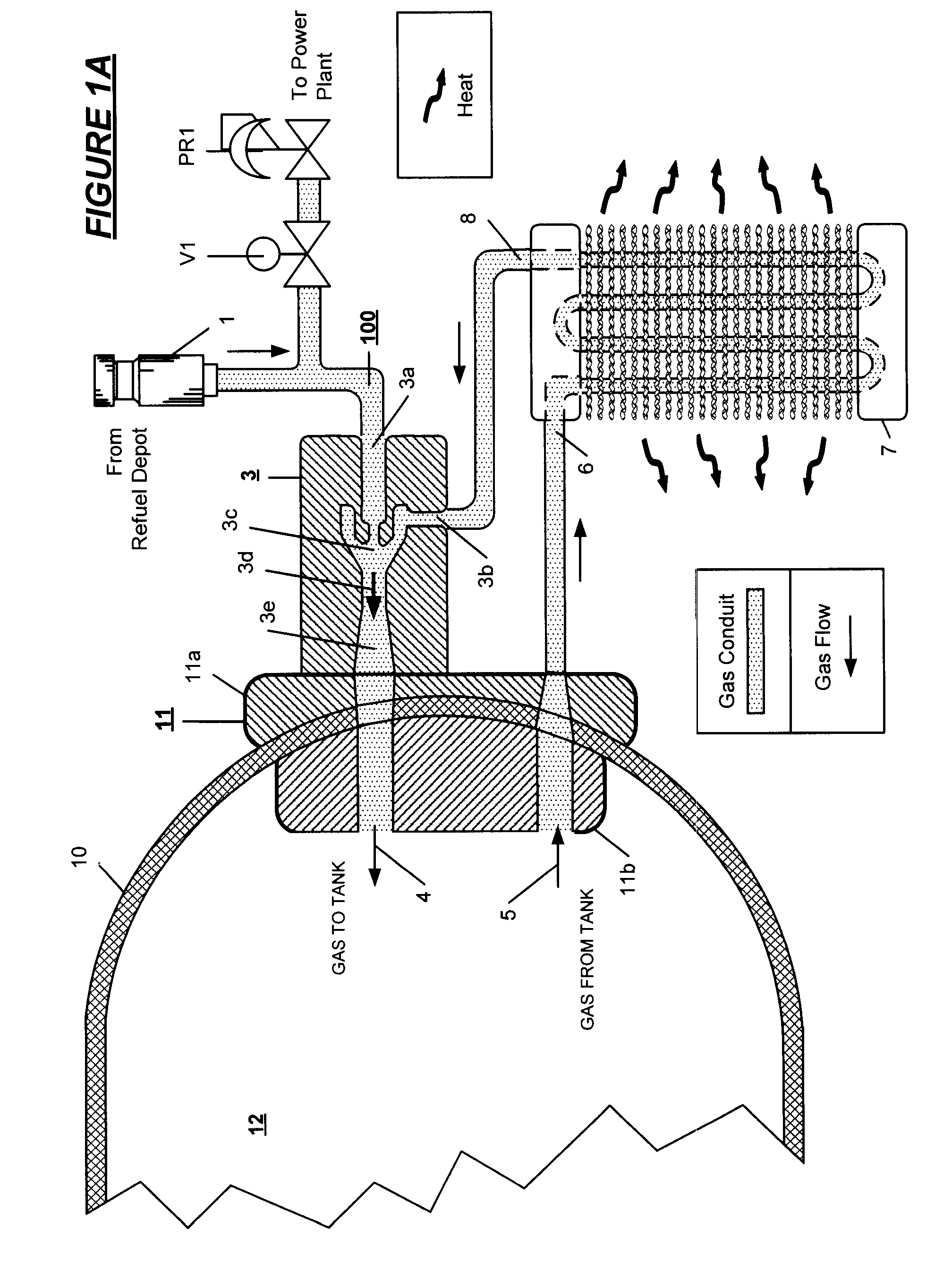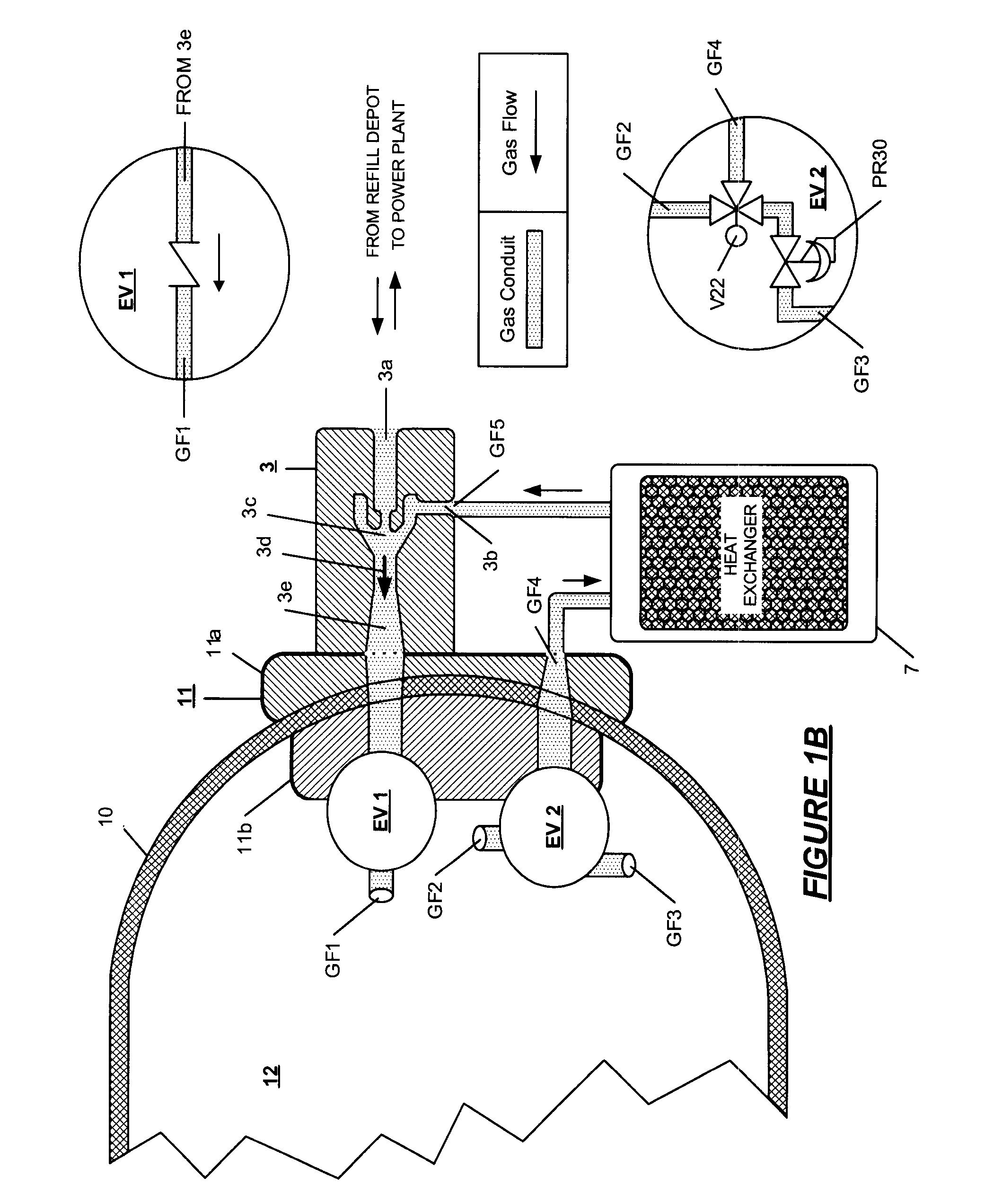Supplemental heat exchange for high pressure gas tank
a gas tank and heat exchange technology, applied in the direction of container filling under pressure, container discharging methods, packaged goods types, etc., can solve the problem of reducing the efficiency of internal heat exchangers to less than 100%, and achieve the effect of reducing the cost and weight of on-board cooling equipment, improving cooling capacity, and achieving heat exchange efficiency approaching 100%
- Summary
- Abstract
- Description
- Claims
- Application Information
AI Technical Summary
Benefits of technology
Problems solved by technology
Method used
Image
Examples
example i
Supplemental Cooling
[0025]FIG. 3A illustrates the common disposition of first gas flow heat exchange loop passing through the in situ device HEX LOOP 1 and second gas flow heat exchange loop HEX LOOP 2 passing through the tank into the same external heat exchanger or radiator 35 where the heat may be dissipated in place or further cooled by a thermal interconnection with a main or sub vehicle cooling system trough an interconnection by inlet 36 and outlet 37. FIG. 3B shows the interconnection of HEX LOOP 1 and HEX LOOP 2 passing through radiator 35 interconnected with HEX LOOP 3, the vehicle power plant main or subsystem cooling loop. Radiator 35 is thermally interconnected with cooling fan 36.
[0026]FIG. 4A, FIG. 4B and FIG. 4C illustrate, in a vehicle application, the respective modes: refilling, driving and parking. In each FIG. 4A, FIG. 4B and FIG. 4C, a valve / gas flow switching and pressure regulator is embedded in each of the end port assemblies 20 and 21 as EV 20 and EV 21. He...
example ii
Internal Warming
[0031]The aforementioned heat exchange techniques may also be utilized as internal gas warming methods for high pressure gas storage cylinders on CNG and hydrogen powered vehicles. As described above, the gas fuel tanks will typically include heat absorbing materials therein. During driving, the gas inside of the tanks may become cold, caused by a decrease in tank pressure wherein the heat absorbing materials in the tank will absorbs heat during the gas evacuation from the tank. In cold climates, the internal gas temperature in a tank may drop to an ambient temperature level, for example, −60 deg-C., a temperature that may be below the permissible operating temperature of O-rings or other rubber or thermoplastic seals utilized in the gas flow system seals, causing the stored gas to leak. The obverse application of the gas cooling systems described is to provide a technology which can warm the inside of tank during driving, thereby reducing the risk of a fuel gas leak...
example iii
Vehicle Operation
[0033]The various modes of vehicle operation are illustrated in the examples of FIG. 4A [refueling], FIG. 4B [driving] and FIG. 4C [parking]. In the refueling mode shown in FIG. 4A, tank boss or end cap port assembly 20 is provided at one end of the tank and includes embedded valve EV21, a one way check valve controlling gas flow GF1 into the tank from ejector pump 3. Boss or port assembly on the opposite end of the tank 21 includes, embedded therein, two switch valves, V2 and V3, and pressure regulator PR2. The switch valves and pressure regulator PR2 are interconnected in the gas flow conduit GF4 leading to the vehicle power plant through switched outlets from the tank GF2 and GF3. V2 and V3 may be combined into a single two way switch having the equivalent function. In the refuel mode, V1, leading to the power plant, is closed and the entry of gas from the nozzle 1 into the conduit 100 is allowed. Of the gas flow tubes associated with embedded valves and regulato...
PUM
| Property | Measurement | Unit |
|---|---|---|
| pressures | aaaaa | aaaaa |
| pressures | aaaaa | aaaaa |
| pressures | aaaaa | aaaaa |
Abstract
Description
Claims
Application Information
 Login to View More
Login to View More - R&D
- Intellectual Property
- Life Sciences
- Materials
- Tech Scout
- Unparalleled Data Quality
- Higher Quality Content
- 60% Fewer Hallucinations
Browse by: Latest US Patents, China's latest patents, Technical Efficacy Thesaurus, Application Domain, Technology Topic, Popular Technical Reports.
© 2025 PatSnap. All rights reserved.Legal|Privacy policy|Modern Slavery Act Transparency Statement|Sitemap|About US| Contact US: help@patsnap.com



